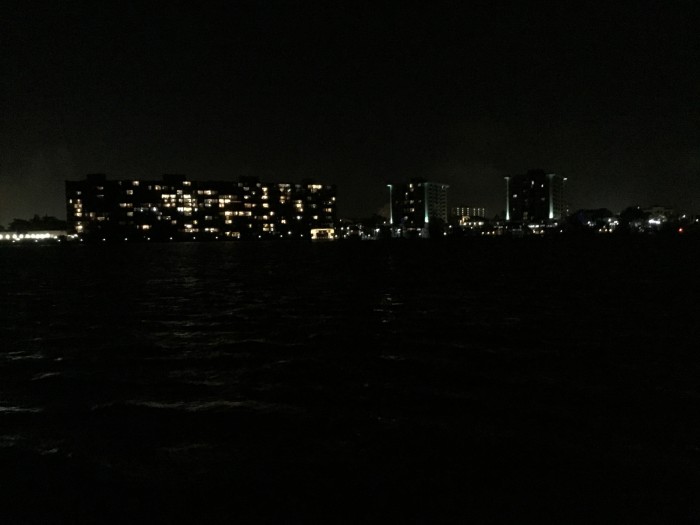Gone Sailing / Abigail Grace
22 February 2018
• Fort Pierce to Lake Worth, North Palm Beach, Fl
by Sunny, Warm

ICW and Bridges by Flash Light
We left Fort Pierce on an incoming tide. We were transiting the St. Lucie Inlet known to have shallow areas. With a draft of 5ft 9in we try to travel with an incoming tide. If we go aground with an incoming tide we have opportunity to free ourself as the tide rises. All our preparation paid off. We motored through the St. Lucie Inlet without so much as a bump - Yeh! TYG. Our plans included stopping at one of two places - Peck Lake or Hobe Sound and anchoring for the nite. We were making such good time we decided to keep going. As we continued south we would transit another inlet and several bridges (did I say several). Bridges work in several ways. Some bridges are plenty tall enough and there is no issue. Some require you to hail a bridge tender on the VHF (radio) to request an opening ie. opens on signal. Some open on a schedule ie. every hour and half hour or every 1/4 after and 3/4 after the hour. Railroad bridges are mostly left open (unless a train is scheduled). Therefore, when putting plans together we consider bridges, as well as, tides (also fuel, water, supplies etc). Our initial plans included tides and bridges to Hobe Sound (the furtherest of the two locations). As we navigated south through the Jupiter Inlet area there were three bridges to transit within a mile of each other. The first two work on signal and the third is timed. We were delayed at the second bridge due to heavy traffic. The tender couldn't open the bridge until the traffic cleared off the bridge. This delay caused a 1/2 hr wait at the third bridge (in addition to the initial delay). This one delay caused a "domino effect" for the remaining bridges (5 timed bridges). With each delayed opening it was getting later and later. Thankfully, the last bridge tender opened the bridge early for us. In the dark, by GPS and flash light, we transited bridges, navigated the ICW, and anchored in the dark. Note to self, "stick to your plan".



Comments